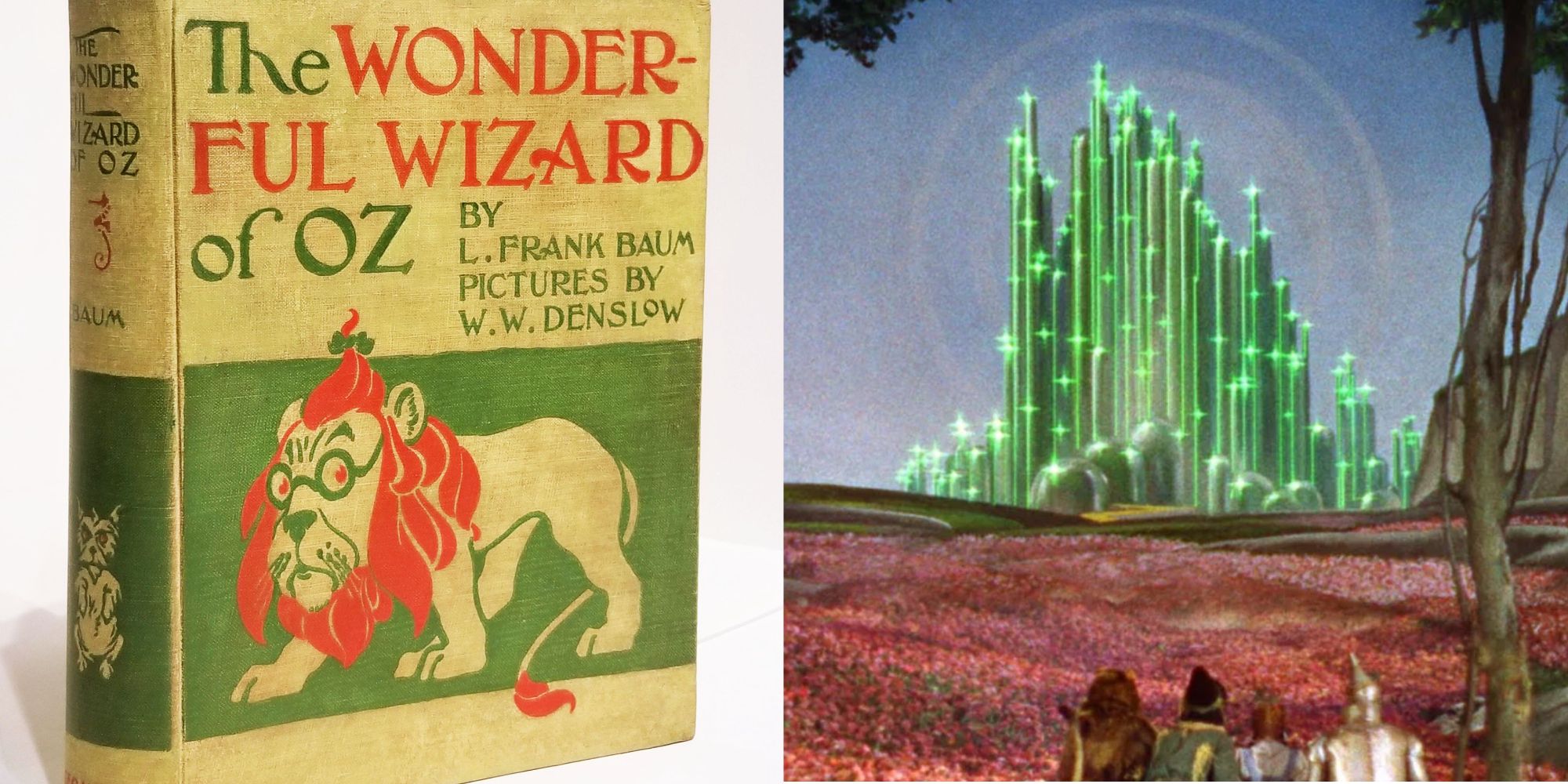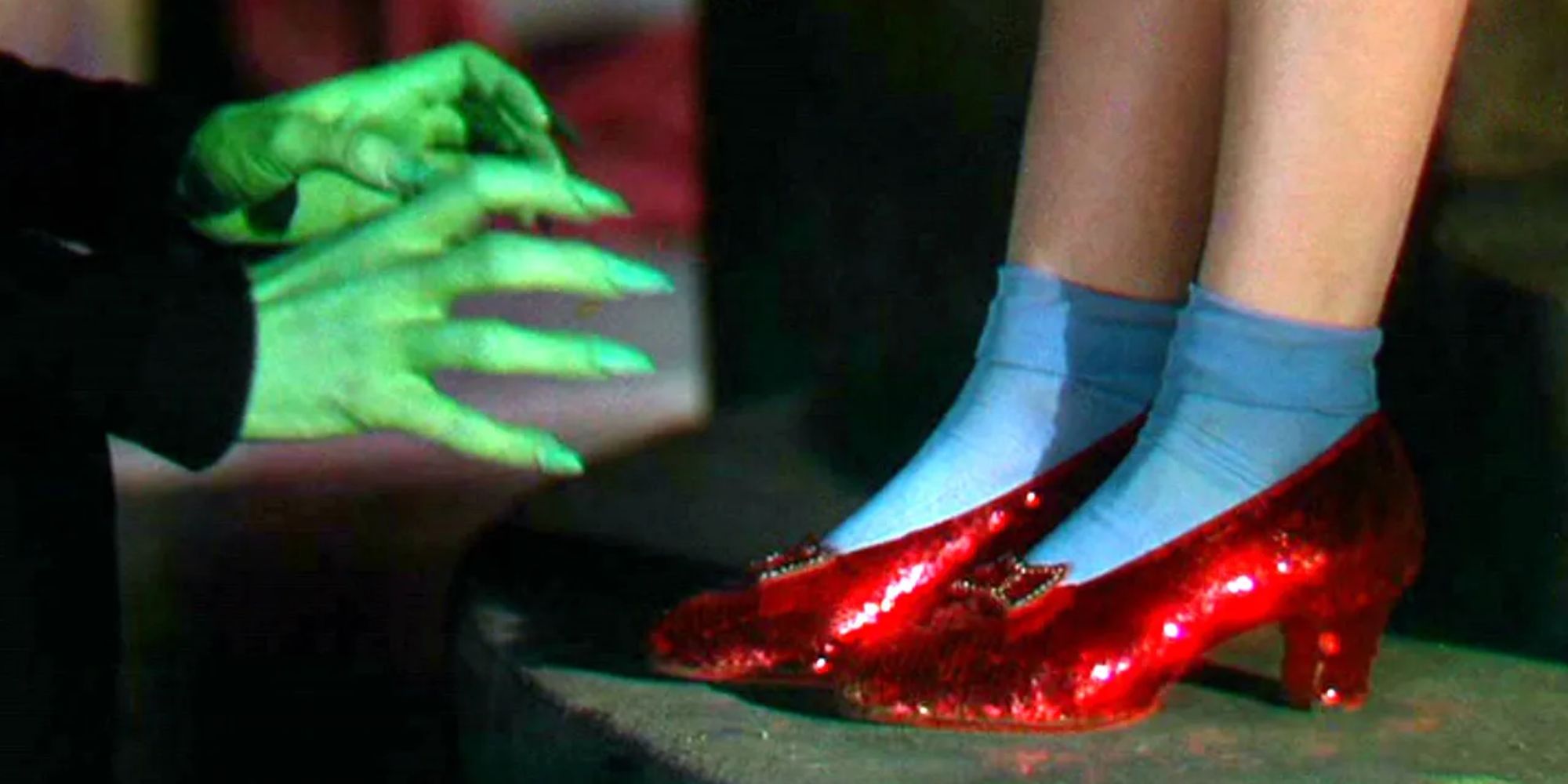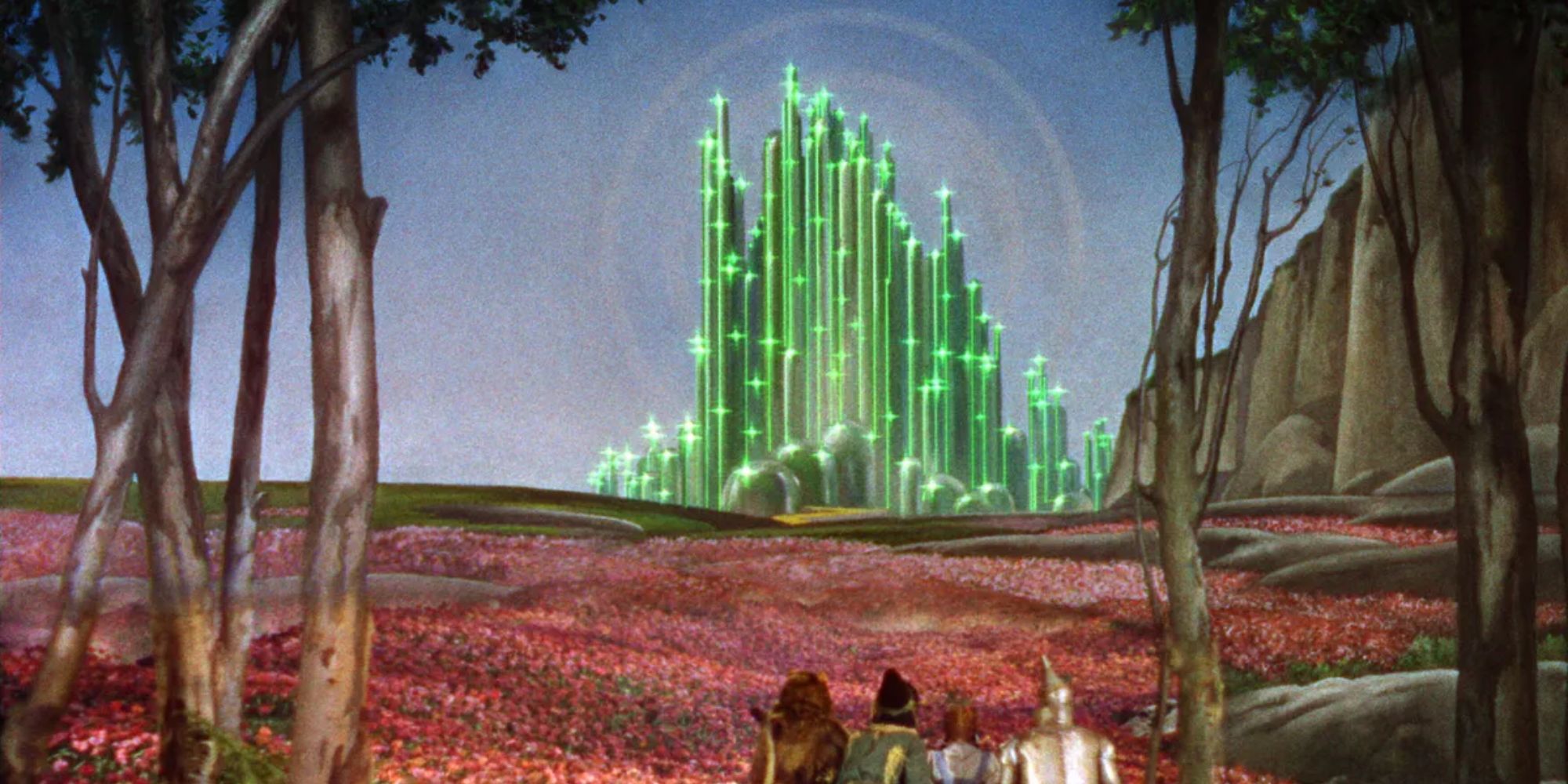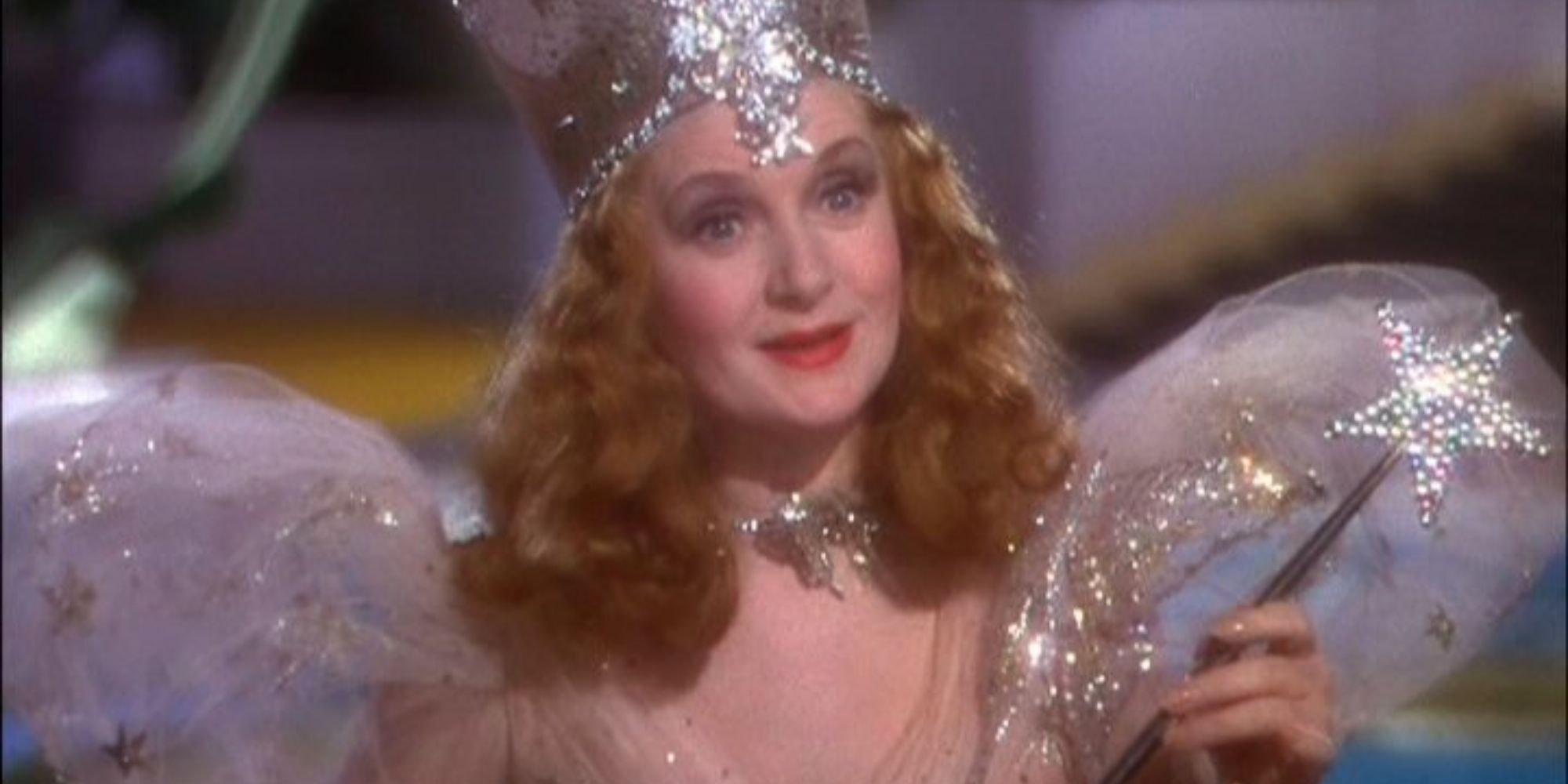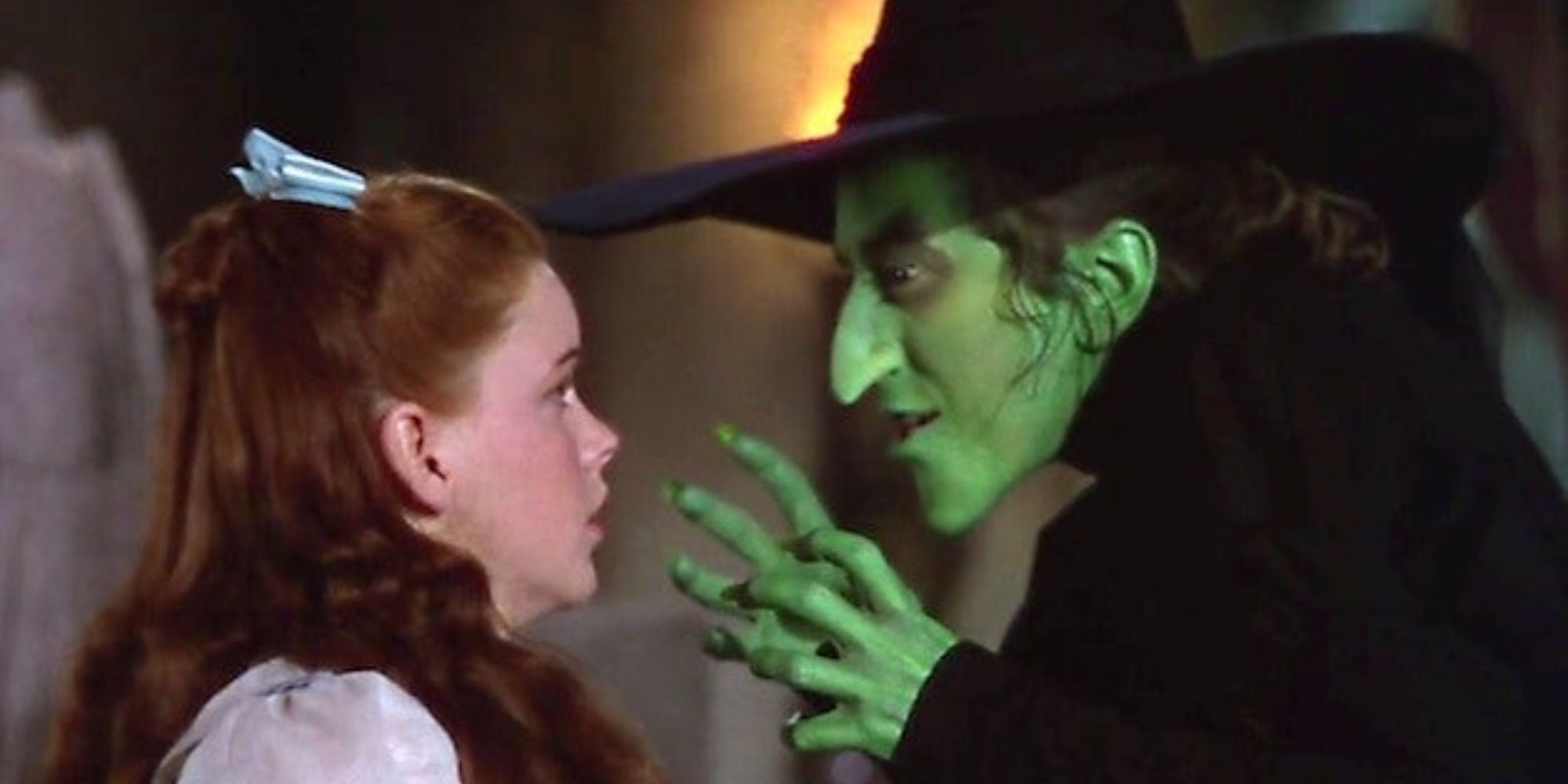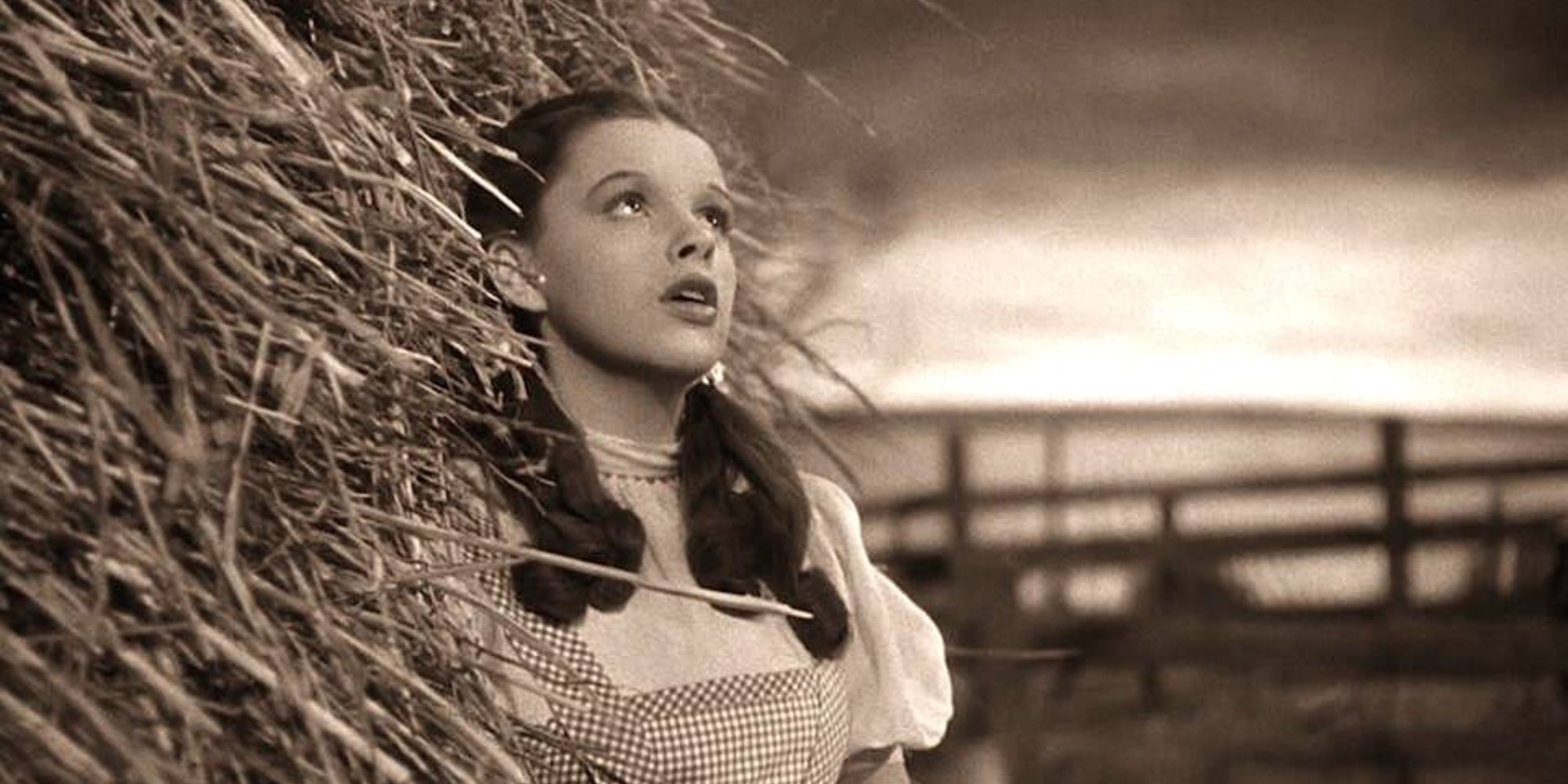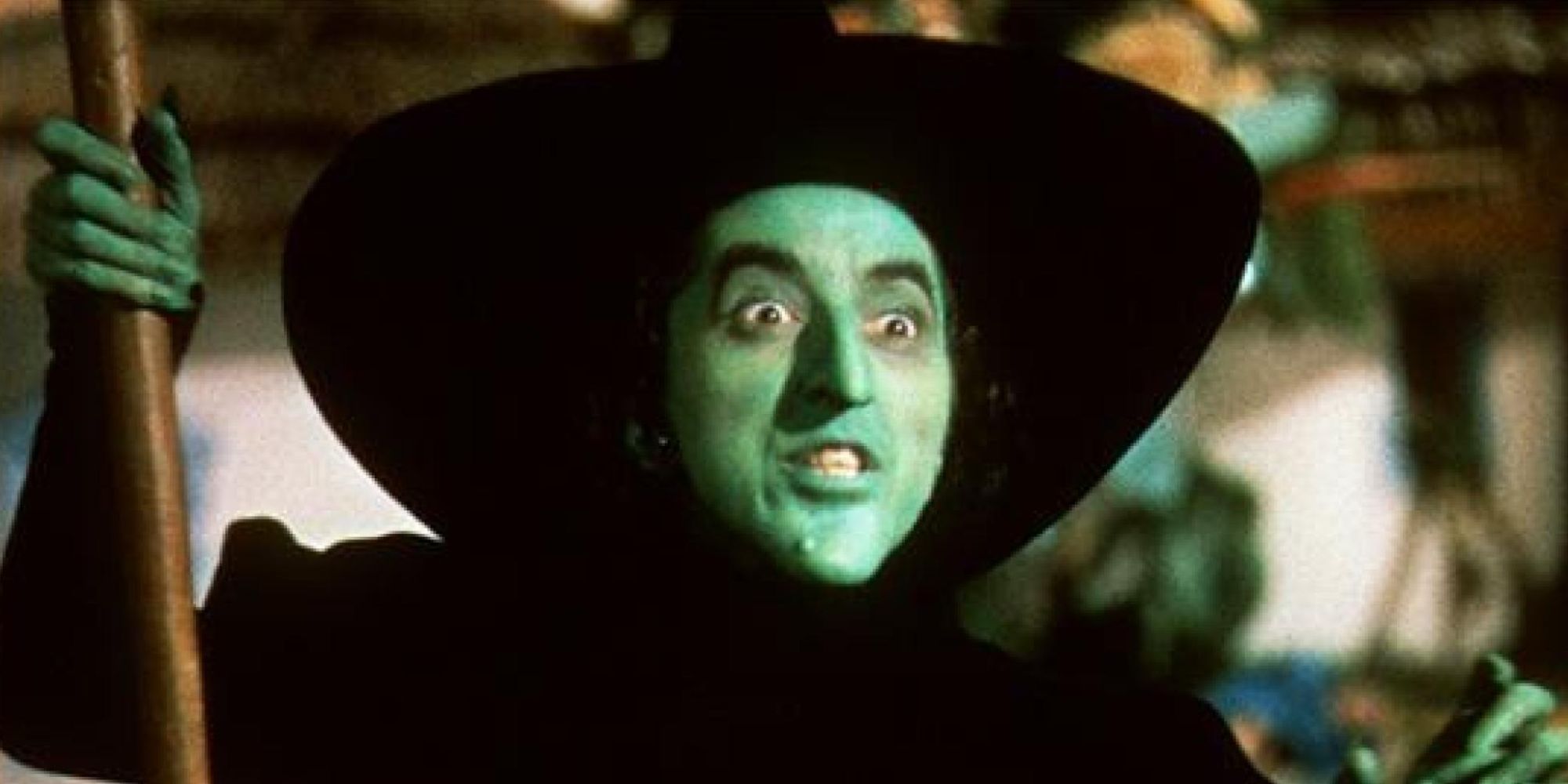The Wizard of Oz (1939) is one of the greatest movies of all time, and is considered by cinephiles and critics alike to be a classic and essential movie. The movie is based on a children's novel The Wonderful Wizard of Oz by L. Frank Baum, who went on to write multiple other Oz books.
The story features Dorothy (Judy Garland), a young girl who is whisked away to a magical, yet unfamiliar land, and her desperate struggle to get back home to Kansas. As with any book to film adaptation, certain things are going to be added, changed, or cut out entirely. Some of these differences, however, go beyond minor tweaks.
The Ruby Slippers Were Silver
The magical ruby slippers bestowed upon Dorothy by the Good Witch of the North (Billie Burke) sparkle and shine with a beautiful red glow in the 1939 film. In the book, though they may be still shiny, they're quite a different colour.
In the novel, the ruby slippers are a pristine silver instead. This is likely because the filmmakers really wanted to showcase the capabilities of Technicolor, and red is obviously a more vibrant color than silver.
The Emerald City Wasn't Green
In the movie, the Emerald City is another plot point that falls victim to having its color changed, In the book, the home of Oz is still called the Emerald City, but its vibrant green color turns out to be only a facade.
Upon arriving there, Dorothy and her companions are forced to don pairs of glasses that are fastened at the back by a lock which is kept by the Gate Guardian. Little do they know, the glasses are what make the city green. When they leave the city and the glasses are removed, Dorothy discovers that the green dress she was given is actually white, and it is later revealed by Oz himself that he forces the people of the city to wear the glasses in order to make the city seem more magical than it actually is. In the movie however, the city really is green, likely for the same reason as the silver slippers being red: the filmmakers wanted to show off the capabilities of Technicolor.
Glinda and the Good Witch of the North Were Two Totally Different People
When Dorothy first arrives in Oz, she is greeted by the Good Witch of the North (Billie Burke), who introduces herself as Glinda. In the book, however, Glinda is actually the Good Witch of the South, and isn't seen until the very end of the novel.
In fact, the Good Witch of the North has a different name according to the other Oz novels. Sometimes she is known as Locasta or Tattypoo, but the fact still stands that her name was most certainly not Glinda. The two characters were likely combined into one for the movie due to time constraints.
The Wicked Witch Doesn't Appear Very Often
The Wicked Witch of the West (Margaret Hamilton) appears very early on in The Wizard of Oz, initially showing up to claim the ruby slippers from her sister's corpse. Once she realizes Dorothy is their new owner, she develops a personal vendetta against Dorothy and becomes hellbent on taking the slippers for herself.
She makes multiple appearances after that, showing up to throw fireballs at Dorothy's companions or watch their journey from her crystal ball. In the novel however, the WItch doesn't care as much. She only becomes remotely interested when Dorothy first sets foot into her territory, after she has already been to see Oz. The Witch doesn't last much longer than two or three chapters in the book, as she meets her swift end not long after she is introduced.
The Intro Doesn't Exist
One of the staples of The Wizard of Oz is its black and white introduction, which features Dorothy on the run from Miss Gulch (Margaret Hamilton), a disgruntled neighbor. Dorothy arrives at her farmhouse and chats with three farmhands, HIckory (Jack Haley), Hunk (Ray Bolger), and Zeke (Bert Lahr). She then tries to run away from home when Gulch insists on taking Dorothy's dog, Toto away, and finds herself in the company of a fortune teller named Professor Marvel (Frank Morgan).
Dorothy returns home in the nick of time as a tornado strikes the farmstead, which carries her away to Oz. Things are a little more concise in the novel. The book wastes no time getting straight to the point. Professor Marvel and the three farmhands simply do not exist, and the tornado appears almost immediately after opening the front cover.
Dorothy Was Much Younger
Dorothy appears to be a teenager in the movie, or at the very least, a young adult. Actress Judy Garland was seventeen years old at the time of the film's release, so Dorothy is more than likely around the same age.
The book version of Dorothy is quite a bit younger. Baum doesn't explicitly state her age, but from the way she is described as being full of life, and shrieks and giggles when she plays with her dog, it is implied that she is only a small child no older than eight. Of course, it would naturally be hard to find a child actress that young in the 30s, especially one with such a demanding role of singing, dancing, and acting in emotional scenes, so it makes sense that her age was increased.
Dorothy Spent Much Longer in Oz
At the end of the film, Dorothy describes her time in Oz as being "days and days" long. Though it appears that the film only takes place over the course of two days and one night, it does imply it to be a bit longer. In the book, Dorothy doesn't just spend days in Oz, she spends weeks, maybe even months there.
The passing of time is more accurately portrayed in the novel, as Dorothy has meals and even sleeps more often than her cinematic counterpart. What's more, when Dorothy arrives back home, her Uncle Henry (Charley Grapewin) has built an entirely new farmhouse on the foundations of the old one. Interestingly, this also implies that in the book, Dorothy really did go to Oz, while the movie alludes to the idea that it may have all been a dream.
The Wicked Witch Had a Different, Even More Grotesque Appearance
In the book, the Wicked Witch of the West only has one eye. This change makes perfect sense because it would be difficult to create a one-eyed character given the technology of the time. Since, aside from illustrations, a novel only really occurs in its reader's mind's-eye, it was able to be a little more creative.
The Wicked Witch in the novel, is in fact, a cyclops of sorts, as she only sports one gigantic eyeball in the centre of her forehead. It doesn't really affect the story, but her appearance in the book is described as even more grotesque than Hamilton's iconic green makeup and prosthetics.
The Queen of the Field Mice
When Dorothy and her companions come across a field of poppies, it doesn't take long before Dorothy, Toto, and the Lion (Bert Lahr) fall into a deep sleep. They are saved by the Tin Man (Jack Haley) and the Scarecrow (Ray Bolger), who cannot sleep, and call for aid from the Good Witch of the North. She creates a snowfall to rouse the sleeping travelers, and the crisis is averted quickly.
In the novel, it is not the Good Witch that saves them. It is instead the Queen of the Field Mice, who summons thousands of mice to carry the sleeping friends away from the poppy field, where they lie until they wake up. Obviously, with CGI not existing in the 1930s, it would have been pretty difficult to show thousands of mice carrying two people and a small dog a considerable distance, so the scene was changed to include the Good Witch instead.
A Lot Happens After Dorothy Visits the Wizard
Oz departs from the novel in much the same fashion as the film--in a hot-air balloon which accidentally leaves without Dorothy. This causes Dorothy to despair at apparently being left in Oz forever. It is then that she is told to seek the help of Glinda, the Witch of the South.
From there, the Scarecrow is trusted to rule Oz, and the Tin Man is appointed leader of the Winkies, who previously served the Wicked Witch of the West. The Lion earns his stripes as well, as he finds a group of animals in the woods, and kills a giant spider plaguing their colony. This leads them to elect him King of the Beasts. After precariously navigating a kingdom made entirely of fine china, the companions find themselves at the mercy of a race of creatures known as the Hammerheads, and are aided by the Flying Monkeys. Dorothy then finds Glinda and is sent home using the magical slippers. Once again, the rest of the novel was likely removed due to time constraints.

